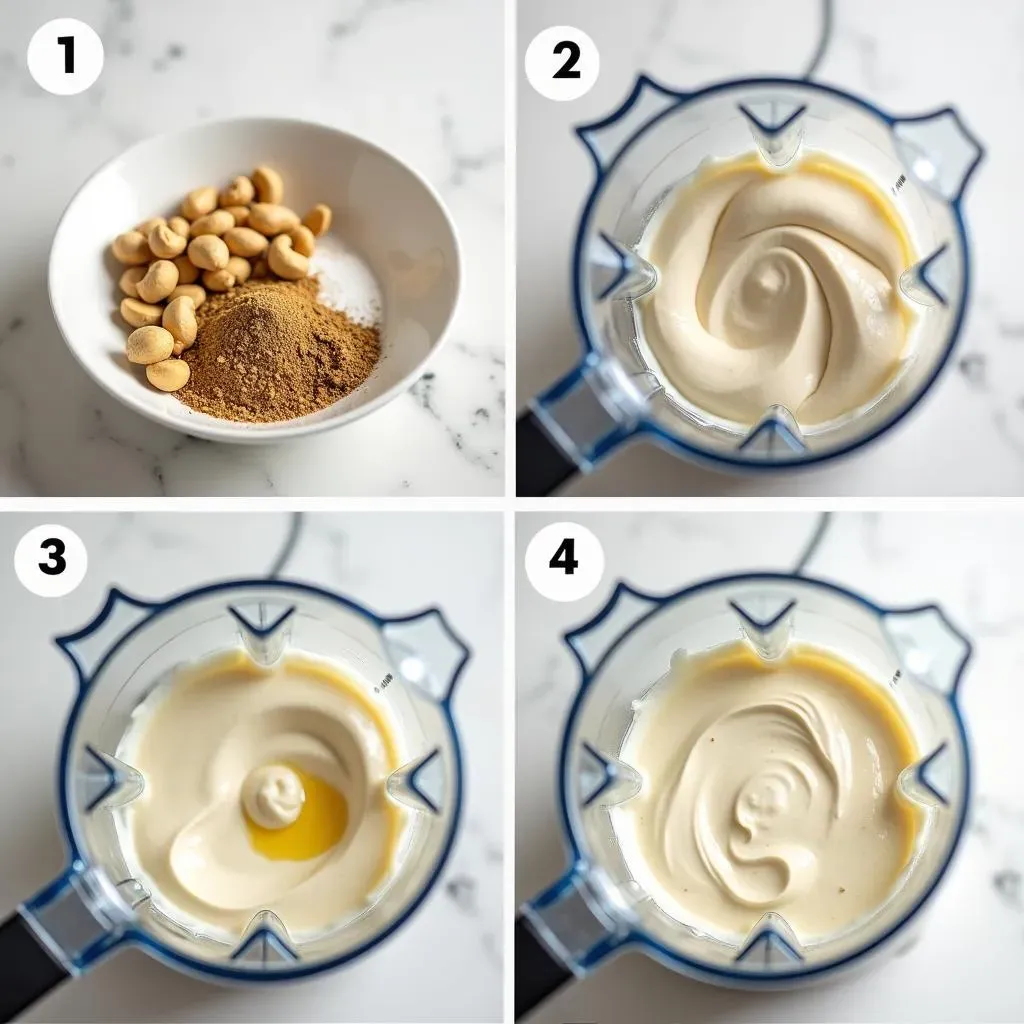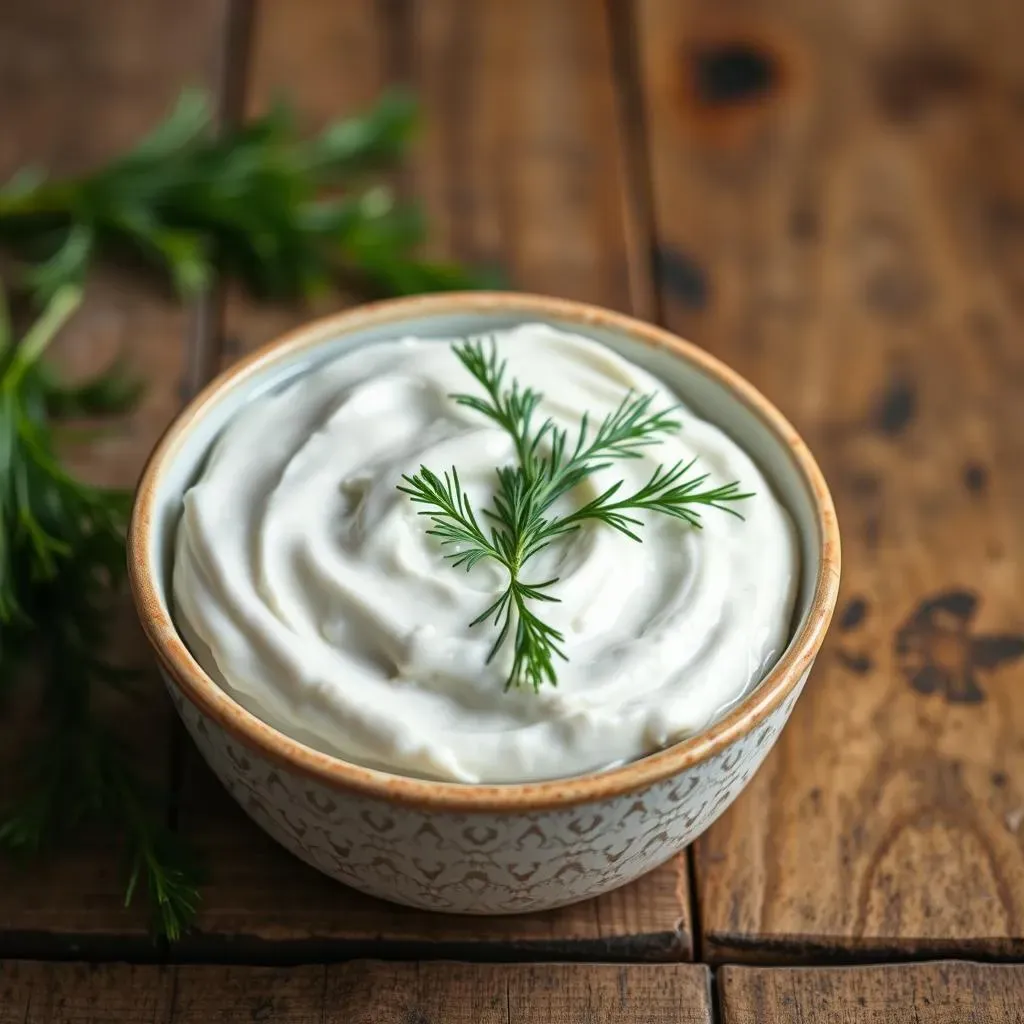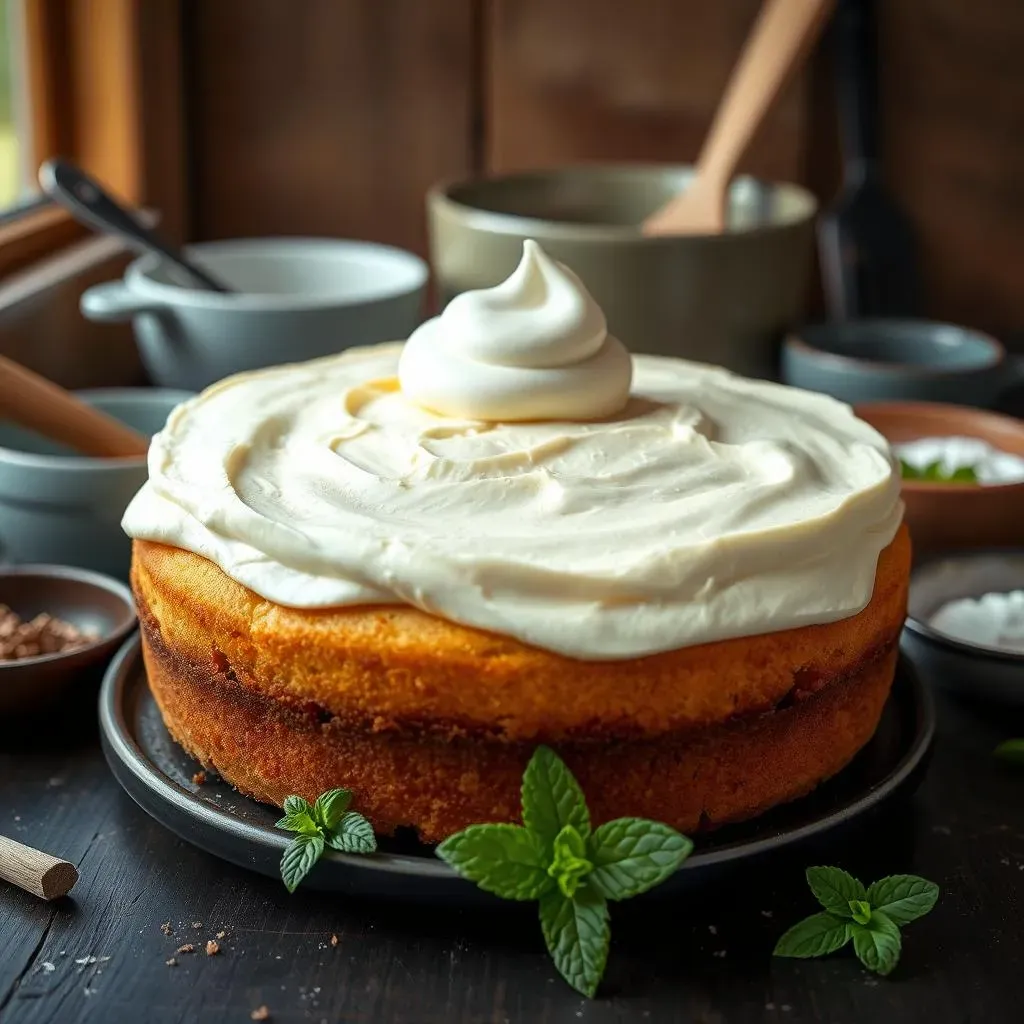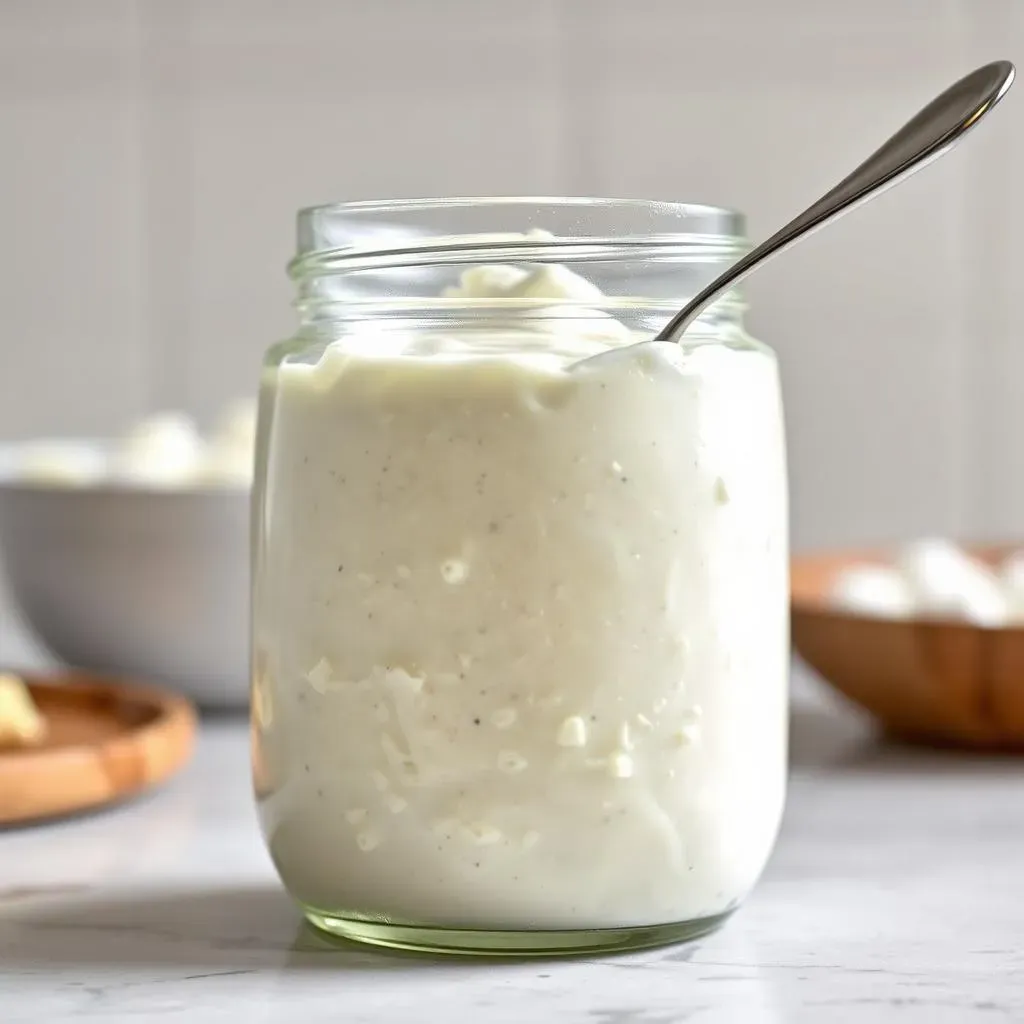Table of Contents
Ever tried baking a cake or whipping up a creamy dip, only to find you're out of sour cream? And what if you're trying to avoid dairy? Well, there is a solution! Let's talk about vegan sour cream for baking. It might sound tricky, but it's actually super easy to whip up a batch of your own. Forget those store-bought versions that sometimes miss the mark, we're making it from scratch and it's going to be amazing. This isn't just about replacing a single ingredient; it’s about opening up a whole new world of baking possibilities. We'll show you how to make this creamy dream, plus give you the inside scoop on how to make it perfect every time. You'll also learn some of the best ways to use your homemade vegan sour cream in baking, and how to keep it fresh. Ready to get started? Let's go!
Making Your Own Vegan Sour Cream for Baking

Making Your Own Vegan Sour Cream for Baking
The Magic of Cashews
Okay, so the secret to amazing vegan sour cream? It's cashews! Yeah, those little kidney-shaped nuts. They're not just for snacking. When blended, they turn into the creamiest base you can imagine. It's like magic, but it’s actually just science. For this recipe, you'll want to use raw, unsalted cashews, and you have two options, you can either soak them in hot water for about 15-20 minutes, or if you have a high-powered blender, you can skip the soaking part. This helps make the blending process super smooth. I once forgot to soak my cashews, it was not a fun time blending them, I ended up with a grainy mess, don't be like me.
Once you've got your cashews ready, it's time to think about the other ingredients. We're talking about the flavor here, the tang that makes sour cream, well, sour cream. That's where lemon juice and apple cider vinegar come in. These give it that classic zing. A pinch of salt is a must, and Dijon mustard? It adds a bit of depth that you didn't know you were missing. Trust me, don't skip it.
Blending to Perfection
Now, for the fun part: blending! Toss your cashews, water, lemon juice, apple cider vinegar, salt, and Dijon mustard into your blender. Start blending, and keep going until it's completely smooth. No gritty bits allowed. If it's too thick, add a little more water, one tablespoon at a time, until you get the consistency you want. I like mine to be thick but still pourable. It should look like a smooth, creamy dream. The first time I made it, I was amazed at how much it looked like real sour cream. It's one of those kitchen moments that feels like a little victory.
Taste it, and adjust if needed. Maybe it needs more lemon, maybe a touch more salt. The beauty of making it yourself is that you can tweak it to your liking. Once you are happy with it, put it in a jar or container and pop it in the fridge. It'll thicken up even more as it chills. This also helps the flavor develop, so you'll end up with a richer taste.
Ingredient | Amount | Purpose |
|---|---|---|
Raw Cashews | 1 cup | Creamy Base |
Water | 1/2 cup | To blend |
Lemon Juice | 2 tablespoons | Tang |
Apple Cider Vinegar | 1 tablespoon | Tang and depth |
Salt | 1/4 teaspoon | Flavor |
Dijon Mustard | 1/2 teaspoon | Depth of flavor |
Tips and Tricks for Perfect Vegan Sour Cream

Tips and Tricks for Perfect Vegan Sour Cream
Soaking Smart
Alright, let's talk about soaking those cashews. It's not just a random step, it's crucial for the texture of your vegan sour cream. If you've got a super blender that can crush rocks, you might be able to skip this. But for the rest of us, soaking is key. Hot water is your friend here. It softens the cashews, making them blend into a silky smooth cream. I usually go for 15-20 minutes. If you are in a hurry, you can use boiling water and soak for 10 minutes.
I've tried it both ways, and trust me, the difference is noticeable. It's the difference between a grainy mess and a velvety smooth cream. Also, if you plan ahead, you can soak them overnight in the fridge. Just make sure to drain and rinse them before blending. This will make your life easier.
Flavor Fine-Tuning
Okay, let's get real about flavor. It's not just about the tang, it's about the whole profile. The lemon juice and apple cider vinegar are your sour power duo. But the secret weapon? Dijon mustard. It adds a depth that just makes it taste like the real thing. Don't be shy with it. Start with the recipe amount, but then taste and adjust.
And here is a little secret, if you like a cheesy flavor, add a bit of nutritional yeast. Not too much, just a teaspoon or two. It'll give it that extra "oomph". I've also seen some people add a pinch of garlic powder or onion powder for extra flavor. It all comes down to what you like, so experiment a little.
- Start with the recipe measurements.
- Taste and adjust.
- Add nutritional yeast for a cheesy flavor.
- Consider garlic or onion powder for extra depth.
Consistency is Key
Now, the consistency of your vegan sour cream is everything. It should be thick but still pourable, just like regular sour cream. If it's too thick, add a tablespoon of water at a time until you get it right. You want it to be smooth, creamy, and dreamy. It should coat the back of a spoon nicely.
Remember, it will thicken up as it chills in the fridge. So, if it seems a little thin right after blending, don't worry. Give it some time, it will get there. And if you have a high-powered blender, you might find that you need less water. It's all about finding that sweet spot. The first time I made it, I kept adding water until it was perfect, it took a few tries.
How to use Vegan Sour Cream in Baking

How to use Vegan Sour Cream in Baking
Cakes and Quick Breads
Okay, let's talk cakes. Vegan sour cream is a game-changer here. It adds moisture, a slight tang, and a richness that's hard to get with other dairy-free options. Think about it: carrot cake, coffee cake, even a simple vanilla cake can go from good to amazing with a dollop of this. The sour cream helps activate the baking powder, which means a lighter, fluffier cake. It's like a secret ingredient that nobody will guess is vegan. I remember the first time I used it in a lemon cake, it came out so moist and delicious, everyone was asking for the recipe.
It's not just for cakes, though. It also works wonders in quick breads like banana bread or muffins. The extra moisture keeps them from drying out, and that little tang it adds is just perfect. You can usually swap it one-to-one for regular sour cream in most recipes. If you’re ever unsure, start by substituting half the amount, then adjust in your next batch.
Savory Baking
But wait, there is more! Vegan sour cream isn't just for sweet stuff. It's fantastic in savory baking, too. Think about it, creamy fillings for quiches, or a tangy topping for baked potatoes. The possibilities are endless. I once used it in a potato gratin, and it added this incredible richness that made everyone think it had tons of cheese in it. I didn't tell them it was vegan, they were all so surprised!
It is also great in savory scones or biscuits. It adds a little bit of moisture and a touch of flavor that elevates them. You can also use it to make a creamy sauce for a pasta bake or casserole. It’s a versatile ingredient that you’ll find yourself reaching for again and again. Honestly, it's like a secret weapon in the kitchen.
Baking Type | How to Use Vegan Sour Cream | Benefit |
|---|---|---|
Cakes | Substitute 1:1 for regular sour cream | Adds moisture and tang |
Quick Breads | Mix into the batter | Prevents dryness |
Savory Dishes | Use in fillings, toppings, or sauces | Adds richness and flavor |
Dips, Frosting and More
Let's not forget about all the other ways you can use this amazing creation. You can use it to make a killer creamy dip for veggies or chips. A dollop on top of chili or tacos is just perfect. It’s also great for making creamy frostings for cakes. It helps cut through the sweetness and adds a little bit of tang that makes it so much better.
The best part is that because it’s vegan, everyone can enjoy it. I’ve brought this to potlucks and gatherings, and it’s always a hit. So, next time you think about baking, don’t forget that a little vegan sour cream can make all the difference. It is truly a game changer in the kitchen!
Storing and Troubleshooting Your Vegan Sour Cream

Storing and Troubleshooting Your Vegan Sour Cream
Keeping it Fresh
Okay, so you've made this amazing batch of vegan sour cream. Now what? Well, the good news is, it keeps pretty well. You'll want to store it in an airtight container in the fridge. I usually use a glass jar, but any container with a tight lid will do. It's like giving it a little cozy home. If you store it correctly, it'll stay fresh for about 5 days, but honestly, it rarely lasts that long in my house. It is too good.
Just remember that it will thicken up even more in the fridge. That's totally normal. So, if you are planning on using it as a dip, you might want to thin it out a little bit with water before serving. This also helps keep it creamy and smooth. It’s one of those things that you just get a feel for as you go. I’ve made it so many times now that I can tell just by looking at it if it needs a little extra water.
Troubleshooting Tips
Alright, let’s talk about what to do if things don’t go exactly as planned. Sometimes, you might end up with a batch that’s too thick. Don’t panic! Just add a little water, one tablespoon at a time, and blend it until it reaches the consistency you want. It’s like giving it a little spa treatment until it is perfect. Other times, you might find it a bit too sweet or tangy. This is where your taste buds come into play. Add a squeeze of lemon juice for more tang, or a pinch of salt to balance out the sweetness.
Another common issue is a grainy texture. This usually happens if the cashews weren’t soaked long enough, or if your blender isn’t super high-powered. If this happens, try blending it again, and if that doesn't work, you can try adding a tablespoon of neutral-flavored oil like avocado oil to help smooth it out. It’s all about experimenting and finding what works best for you. Don't give up, even if your first batch isn’t perfect. It’s all part of the learning process.
- Too Thick: Add water, 1 tbsp at a time.
- Too Sweet: Add lemon juice.
- Too Tangy: Add a pinch of salt.
- Grainy Texture: Blend longer, or add a tablespoon of neutral oil.